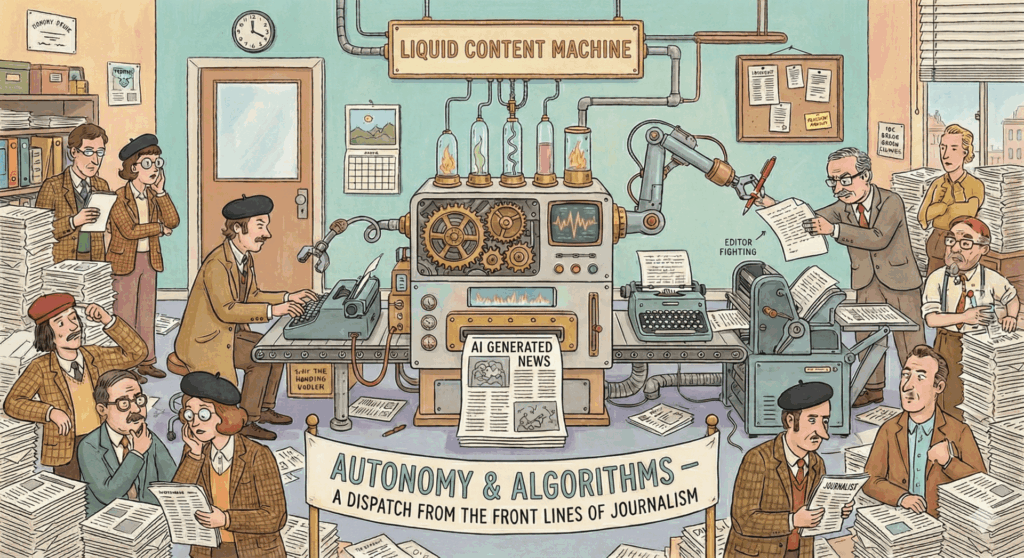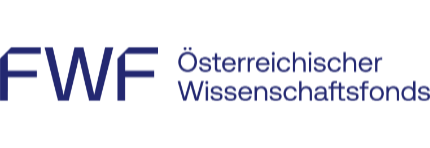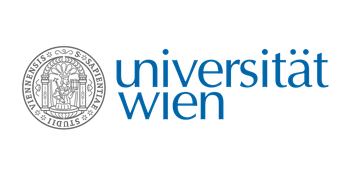
How is the appropriation of ComAI in journalism affecting the conception of journalistic autonomy?
PhD project of Jonah Wermter
Journalistic autonomy is a key concept in journalism – sometimes even mentioned as a legitimizing element, distinguishing it from neighbouring domains such as PR or advertising. (Lauerer et al., 2025; Örnebring & Karlsson, 2022; Sjøvaag, 2013). However, it is also a contested concept. While the ideal of a complete absence of outside influences on journalistic work is still important for professional self-conception, the inevitability of those influences is widely acknowledged in literature (Lauerer et al., 2025). These include the audience and sources as well as systemic dependencies on the political and economical systems. Thus, autonomy can be conceptualised on an institutional level as the domains capability to define what is journalism and what is not[1]. Additionally, on an individual level, it can be operationalized as the capability to decide which topics to cover and how.
My thesis is guided by the hypothesis that the emergence and appropriation of ComAI (Esposito, 2022) in journalism will impact journalistic autonomy on different levels, by changing the information system journalism operates in as well as journalists’ methods of practice. This includes institutional changes like the growing role of AI-systems as information intermediaries and the connected change in formats toward “liquid content” (personalised, modular content based on journalistic work, leading to journalists producing information for machine-readability instead of humans). And it includes immediate impacts on organizations and individual journalists, e.g. by heightened economic pressure (through efficiency gains and structural changes in the advertising market).
Together, these developments will change what is seen as journalistic, touching on the above-mentioned capability for self-governing. We already observe a discourse among journalists and pioneers about the core of journalism, i.e. its constitutive practices and characteristics. As machines learned to communicate like humans (Esposito, 2022) and produce high quality texts and media, the professional focus of journalists seems to shift away from writing and creating news products towards news judgment, human relationships and the maintaining of trustworthiness as key skills. Thus, the appropriation of language and communication by AI leads to a self-affirming redefinition of what journalism really is about – a practice describable as boundary work (Carlson & Lewis, 2015).
By analysing different hybrid figurations (Hepp et al., 2023; Hepp & Hasebrink, 2017) of ComAI-appropriation in journalism, I will investigate how journalistic autonomy is re-conceptualised with regard to individual as well as institutional frameworks of autonomy (Breaugh, 1985; Carlson & Lewis, 2015; Haim & Kunert, 2025; Lauerer et al., 2025; Örnebring & Karlsson, 2022). Ethnographic studies in newsrooms and group discussions with a variety of journalists will allow me to analyze in depth the incorporation of ComAI in everyday work, how it affects journalists and their understanding of journalism. To analyse changes on the institutional level, I will draw on semi-structured interviews with domain experts and pioneer journalist (Hepp & Loosen, 2021) as well as ethnographies at conferences. This approach will allow me to understand the newly emerging hybrid figurations journalism operates in.
I will further analyse how the appropriation of AI affects the language and style of journalism, thus influencing the creative and episodic autonomy of journalists, using data from the ComAI research space. This multi-method approach will provide important explanations for the positioning of journalism in a further digitised society.
[1] This is not to be understood in the sense of professionalism, i.e. the institution’s ability to certificate proper members. Rather, it is about the institution’s capability to govern its self-conceptional discourse as well as its societal perception.
References
Breaugh, J. A. (1985). The Measurement of Work Autonomy. Human Relations, 38(6), 551–570. https://doi.org/10.1177/001872678503800604
Carlson, M., & Lewis, S. C. (2015). Boundaries of journalism: Professionalism, practices and participation. Routledge, Taylor & Francis Group.
Esposito, E. (2022). Artificial communication: How algorithms produce social intelligence. The MIT Press.
Haim, M., & Kunert, J. (2025). XII. Technologische Innovation im Journalismus. In T. Hanitzsch, W. Loosen, & A. Sehl (Eds.), Journalismusforschung (pp. 249–264). Nomos Verlagsgesellschaft mbH & Co. KG. https://doi.org/10.5771/9783748932291-249
Hepp, A., & Hasebrink, U. (2017). Kommunikative Figurationen. Ein konzeptioneller Rahmen zur Erforschung kommunikativer Konstruktionsprozesse in Zeiten tiefgreifender Mediatisierung. Medien & Kommunikationswissenschaft, 65(2), 330–347. https://doi.org/10.5771/1615-634X-2017-2-330
Hepp, A., & Loosen, W. (2021). Pioneer journalism: Conceptualizing the role of pioneer journalists and pioneer communities in the organizational re-figuration of journalism. Journalism, 22(3), 577–595. https://doi.org/10.1177/1464884919829277
Hepp, A., Loosen, W., Dreyer, S., Jarke, J., Kannengießer, S., Katzenbach, C., Malaka, R., Pfadenhauer, M. P., Puschmann, C., & Schulz, W. (2023). ChatGPT, LaMDA, and the Hype Around Communicative AI: The Automation of Communication as a Field of Research in Media and Communication Studies. Human-Machine Communication, 6, 41–63. https://doi.org/10.30658/hmc.6.4
Lauerer, C., Altmeppen, K.-D., & Riedl, A. A. (2025). Autonomie und Einflüsse im Journalismus. In T. Hanitzsch, W. Loosen, & A. Sehl (Eds.), Journalismusforschung (1. Auflage). Nomos Verlagsgesellschaft mbH & Co. KG. https://doi.org/10.5771/9783748932291
Örnebring, H., & Karlsson, M. (2022). Journalistic Autonomy: The genealogy of a concept. Univ. of Missouri Press.
Sjøvaag, H. (2013). Journalistic Autonomy: Between Structure, Agency and Institution. Nordicom Review, 34(s1), 155–166. https://doi.org/10.2478/nor-2013-0111
Contact
Contact:
Prof. Dr. Andreas Hepp
ZeMKI, Center for Media, Communication and Information Research
University of Bremen
Phone: +49 421 218-67620
Assistent Mrs. Schober: +49 421 218-67603
E-mail: andreas.hepp@uni-bremen.de







